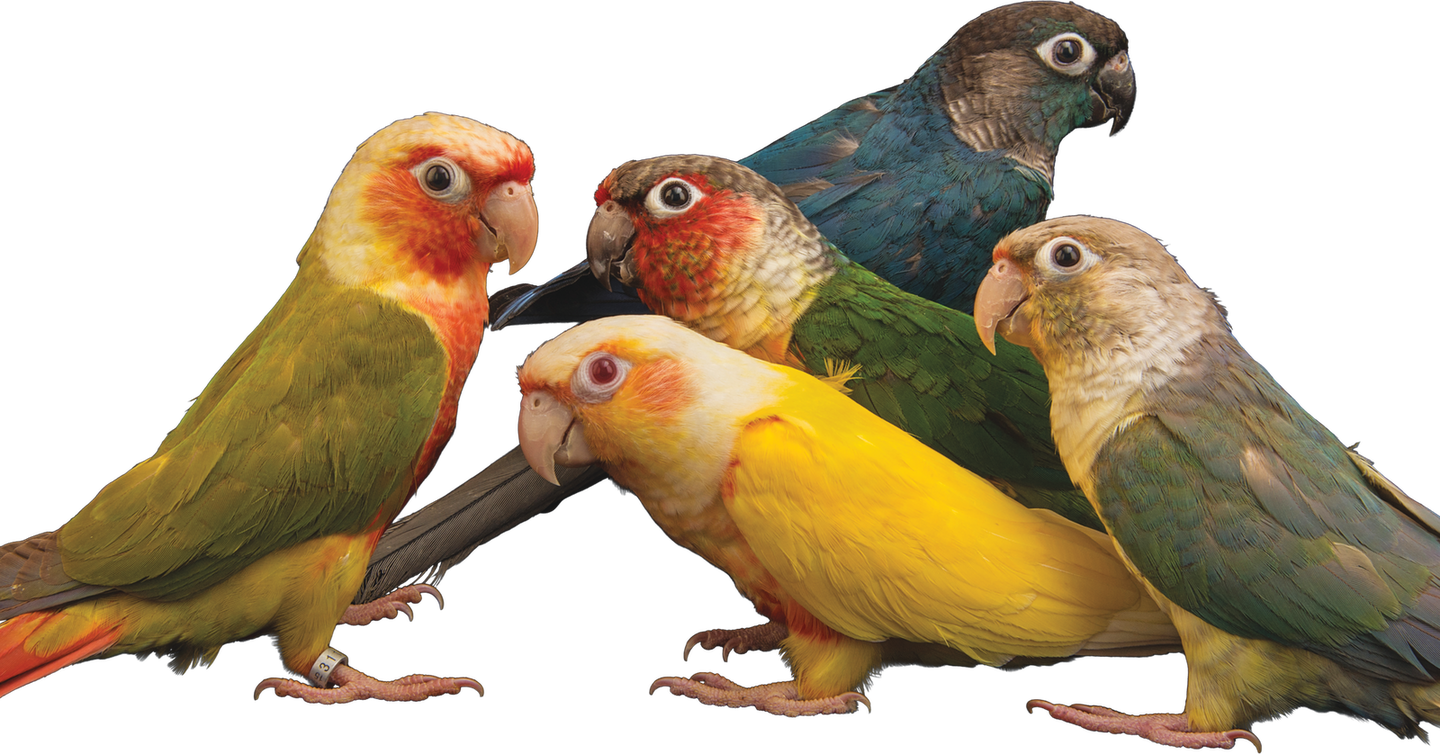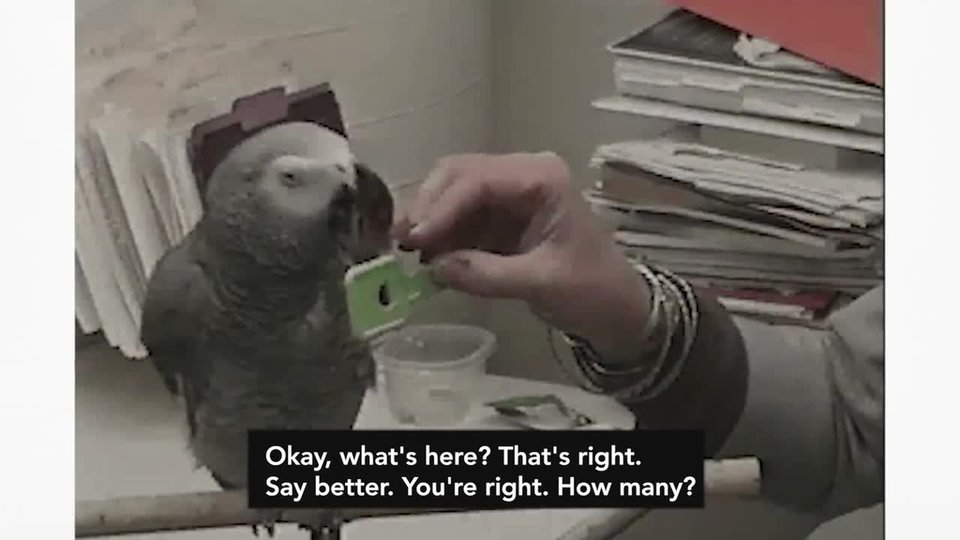LookingOutforParrots
Howcanwekeepparrotssafe?Scientistsaremakingtests.Theteststellifabirdiswildor not.
Onetestlooksatparrotfeathers.Itshowswhataparroteats.Thistellswhereitcomes from.
Protectingparrotsworks.Here’sanexample.Once,therewereonly13PuertoRicanparrotsinthewild.Scientistsbredtheminbreedingcenters.Now,hundredsofthesebirdsliveinbreedingcentersandinthe wild.
Scientistswillkeeplookingforsolutions.Theyknowparrotsareworth protecting.
1
Thinktwicebeforebuyinga bird.
Makesurethisistherightkindofpetfor you.
2
Ifyoualreadyhaveapetbird,giveitagood life.
Playwithyour parrot.
3
Supportgroupshelpingbirds,like these:
• WorldParrot Trust
• Parrots International
• WildBird Trust
• BirdLife International
4
Learnmore!
Starthere:
• humanesociety.org
• avianwelfare.org
• cites.org
5
Spreadthe word.

green‑cheeked conures
Alex,the African Gray
IrenePepperbergisascientist.Shestudiesthewayanimalslearn.In1976,sheboughtanAfricangrayparrot.ShenamedhimAlex.Shewantedtoteachhimafew words.
Alexlearnedmorethan100 words.Healsocreatednewwordsofhis own!
Hecoulddescribeobjects,shapes,andcolors.Hecoulddomath.Alexalsounderstoodconceptssuchasnone,same/different,and bigger/smaller.
Alexprovedtotheworldthat“birdbrains”canbeprettybrightafter all.
